Our Riad Marhbabikoum was very comfortable and our hosts Khalil and Veronique were welcoming and helpful. While we were waiting for Mohamed, Khalil sat with us in the riad internal courtyard and talked about his beloved Marrakech*, providing us also with some curiosities about Morocco:
"Did we know that the Maghreg (comprising most of the region of north-west Africa west of Egypt - refer entry 'Morocco Profile- Ancient Berbers to the Arab Spring') is Arabic for "west'? Did we know that the country of Morocco was once known as The Kingdom of Marrakech and in the languages of Persian and Urdu, Morocco is still known as Marrakech? And did we know that because Morocco is the last country in western Africa before the Atlantic Ocean, Marrakech is known as "The Place where the Sun Sets"?
Khalil confirmed also what we had concluded during our travels about the profile and popularity of the current monarchy. Yes, the royal family still maintains a very high profile with the Moroccan population. It was interesting to note that the monarchy is widely regarded as strong and having a highly stabilising political, social and spiritual influence on the country.
That morning we received confirmation from our travel agent Ken Warren in Australia that our Alitalia air tickets from Casablanca to Rome were re-booked (our Tunis Air flight from Tunis to Rome had been cancelled - refer entry: "A Smashing Start: How Often Does it Flood in the Sahara?). It was a great relief as we were flying out to Rome the following day. I was also pleased and relieved that I had managed to email some photos to my parents in aged care back home. I was grateful to travel agent Ken for his wonderful efficiency and also the care managers who were kind enough to ensure the photos were placed in special folders for my parents to view.
A new day and we were looking forward to our day in Marrakech. Like Casablanca, it has a wonderful name which to us is so evocative of its romantic and exotic past.
Marrakech is the fourth largest city in Morocco (after Casablanca, Rabat and Fes) and is the capital of the mid south-western region of Marrakech-Tensift-El Haouz. Constructed by the Berber Empires, the city is regarded as the most important of the four former imperial Berber cities.
Marrakech was founded in 1062 by Abu Bakr ibn Umar, the chieftan of the Almoravid king. In the 12th century the city flourished with the Almoravids building many beautiful madrassas and mosques bearing significant Andalusion architectural influence. The signature red fortress walls of the city were also built during this time, giving rise to its name of the "Ochre City". Under the rule of the Almoravids, Marrakech city prospered further to become a significant cultural, religious and trading centre for the Maghreb and sub-Saharan Africa.
The city declined later when it became surpassed by the city of Fes but in the early 16th century, it regained its status as capital of the kingdom under the wealthy Saadian kings Abu Abdallah al-Qaim and Ahmad al-Mansur who embellished the city with opulent palaces and restored many of the city's decaying and fallen monuments. In the early 17th century, the city became popular among Sufi pilgrims for Morocco's seven patron saints who are now entombed there.
In 1912 the French Protectorate was established and T'hami El Glaoui became the Pasha (ruler) of Marrakech until Independence and the re-establishment of the monarchy in 1956.
MAJORELLE GARDENS
Mohamed was not happy with the world. We had expected to visit one of Marrakech souks but to our surprise, he dropped us off at the Marjorelle Gardens, once the home of landscape painter Jacques Majorelle and later restored and glorified by the famed designer Ives St Laurent.
Contrary to our distaste for the movies, Alan and I simply adore gardens and we are avid gardeners at our home in Crowdy Head, Australia. We both have a background in botany and when we are travelling are always keen to find out more about the plants we come across overseas. Some of the more unusual succulents from the collections of the Majorelle Gardens were curious but on the whole, the gardens were disappointing and quite frankly, downright boring. Despite positive reviews from Lonely Planet Guide, in our opinion it was a real tourist rip off and we would not recommend it as a worthwhile site to visit. Dejected tourists packed the gardens, looking as bored as we were. Obviously like us, they had been dropped there by their tour operator to fill in some time.
In less than 30 minutes we had seen more than enough and departed to find Mohamed. But in the hustle and bustle of the very busy tourist site, Mohamed was no-one to be found. Another forty five minutes later, Alan found him in his car about half a kilometer way. We were to find out the hard way that the parking in Marrakech is simply woeful and guides cannot park anywhere near tourist sites.
TOMBS OF THE SAADIAN KINGS
Our next visit was to the Tombs of the Saadian Kings. Our problem was that we had no briefing and therefore had no idea where we were and what we were visiting. Only later did we realise the significance of the building and its precious tombs. Obviously, the site would have been interesting had we been more prepared. The lack of signage within the complex did not help either.
The Saadian Tombs were sealed up for centuries before they were re-discovered in 1917 during a French aerial survey. It is thought that the site may have been a burial ground before the Saadian period, but the earliest known burial dates from 1557 and it is known that all the main buildings were constructed under the rule of Sultan Ahmed el Mansour (1578-1603).
The enclosure consists of two main mausoleums, housing 66 tombs and over 100 more are outside in the gardens. The first mausoleum is the finest of the two with a vaulted ceiling and fine carvings. It was built within the lifetime of Mansour to house his own tomb and features ornately carved Italian Carrara marble. At the rear is a very handsome mihrab supported by a group of elegant columns. In the centre of the domed mihrab is Mansour's tomb. The second mausoleum is older but less impressive. It was built by Ahmed Mansour over an existing pavillion which housed his mother's tomb and the founder of the Saadian dynasty Mohamed ech Sheikh.
THE BAHIA PALACE
We were rapidly entering the "Must We?" phase of our Marrakech tour when Mohamed dropped us off at the Bahia Palace. This time at least we knew that we were at the Royal or Bahia Palace.
Interestingly, the Bahia Palace was originally built in 1866–7 for Si Moussa, a former negro slave who amazingly for his day, rose to become the then king's chamberlain, and then grand vizier. His son, Bou Ahmed later gained virtually complete control over the state, which he exercised until his death in 1900. The palace was extended and refurbished between 1894 and 1900 with craftsmen being brought in from Fes to work on the monumental task which took some fifteen years to complete.
The name Bahia means "Palace of the Beautiful" (we had seen a number of trendy hotels that should have been given this name...). Apparently there are some 160 different rooms in the palace, including reception halls, tiled courts with water features and a large number of bedrooms. It is said that the palace was built primarily as a home for Ahmed's official concubines and that the importance or favour of each concubine increased along with the size of their bedroom. The entire palace is housed within two acres of gardens.
Disappointingly, most of the complex was locked off from the public. We had no idea why this was the case but later learnt that the entire palace may be locked off from public viewing when the royal family is visiting Marrakech.
The stucco panelling, carved cedar ceilings, marble and zellige tile work (terracotta tiles covered with enamel in the form of chips set into plaster) in the rooms we viewed were undeniably lovely but the lack of furniture and furnishings took away the ambiance and any sense of history the palace should have enjoyed. The place was sad and soulless. And once again the lack of signage within the complex made it difficult to fully appreciate what we were viewing. Observing the body language of the other tourists, I guessed we were not alone in our disappointment.
JEMAA el-FNAA
We flopped into Mohamed's car tired, irritable and quite frankly fed up with our continued disappointment of a city about which we had heard so much. Mohamed's news didn't help. He explained he would to drop us off near the Jemaa el-Fnaa (Marrakech's famous city square) where we could wander at our leisure, then visit the neighbouring souks and medina of the old city. There was no way he could park anywhere or accompany us through the medina. That was fine with us. We were looking forward to the markets and the medina. Our only problem was how would we find our way through the medina and back to our riad? We understood that the the Marrakech medina, like Fes was a maze of alleyways and furthermore, we had no idea where our riad was located. Mohamed drew us a mud map, left us his phone number (which we had) and we were on our own.
The Jemaa el-Fnaa was absolutely packed with tacky stalls, frantic shop sellers and European tourists. What we thought would be an interesting place to visit became a nightmare of the very worst of tourism. Jaded and cross carriage horses waiting for tourists, snapped and kicked at each other. Stall sellers with monkeys on chains accosted us, demanding money for us to watch the monkeys' tricks. Amongst the rugs and goods on the ground for sale, snake charmers with their unfortunate captives begged us to watch their performances.
Alan, was looking over his shoulder when he almost trod on a cobra sliding its way across the grounds of the square. He was just millimeters from standing on the poor thing. It was the final straw. We decided to find a cafe for lunch and clear out of the rabble of the hideous Jemaa el-Fnaa. The fine looking Hotel Restaurant Cafe du France looked just the place for a refreshing drink and a light lunch. To our continued disappointment, the restaurant did not sell beer so we settled for a fresh orange juice. Anything was OK by then.
Our afternoon walk in the medina did nothing to improve our humour. The shops and stalls sold tasteless tourist goods, reminding us very much of our disappointing experience in Casablanca. In no time, we decided to return to our Riad Marhbabikoum. We tried to follow Mohamed's mud map but we became hopelessly lost and the further we walked the more pointless it became. Calling Mohamed on our phone was fruitless as for some reason our calls would not connect (this is more usual than unusal with our phone success). We also realised that although Mohammad had written the name of the riad, we did not have their phone number. I guess in hindsight, we would not have thought we would have needed it either..... We asked several people for help but although they tried hard to understand and help us, they shook their heads, telling us through gestures that they had never heard of the Riad Marhbabikoum.
After an hour of futile searching, we decided to retrace our steps back to the Hotel Restaurant Cafe du France. Perhaps they knew of the riad and/or could find someone who could help us. The cafe staff were wonderful but they too had no idea. They even used the cafe phones to try to call Mohamed, but like us without success. Dejected, we settled for another glass of orange juice. One of the staff obviously felt very sorry for us. He persevered in calling Mohamed from his own cell phone and thankfully finally was able to contact him and then assist us in finding our way back.
We were in fact not that far from our riad when we turned back the first time. It was a most miserable way to end our day. But then again the start wasn't too good either. Perhaps it was that blessed "Ill Wind" again?
Our hosts Khalil and Veronique greeted us warmly back to the riad. "Would you care for a meal at the riad? We are preparing a specialty of the house - a sardine tagine" they asked. We draped ourselves in their comfortable courtyard chairs and enjoyed several glasses of wine - and later on the very special meal of sardine tagine.
And thanked goodness the frigg'n day was over.... We had not even seen the Sun Set Over Marrakech.
* Marrakech is the French spelling of the English version of Marrakesh. For consistency, I have kept with the French spelling as - well, I just like it!
Where the Sun Sets OR a Brush with a Cobra!
Sunday, May 25, 2014
 Marrakech, Morocco
Marrakech, Morocco
Other Entries
-
18Tunisia Profile: Phoenicians to the Arab Spring
May 1114 days prior Tunis, Tunisiaphoto_camera5videocam 0comment 0
Tunis, Tunisiaphoto_camera5videocam 0comment 0 -
19Tunis: A City of Brilliant White & Cobalt Blue
May 1114 days prior Tunis, Tunisiaphoto_camera21videocam 0comment 0
Tunis, Tunisiaphoto_camera21videocam 0comment 0 -
20Toward the Algerian Border: Destination Le Kef
May 1213 days prior Tunis, Tunisiaphoto_camera48videocam 0comment 0
Tunis, Tunisiaphoto_camera48videocam 0comment 0 -
21Tunis: Medinas, Mosques, Cafes & Razor Wire
May 1312 days prior Tunis, Tunisiaphoto_camera10videocam 0comment 0
Tunis, Tunisiaphoto_camera10videocam 0comment 0 -
22"If You Love Ladakh, You Will Just ADORE Morocco!"
May 1411 days prior Casablanca, Moroccophoto_camera18videocam 0comment 0
Casablanca, Moroccophoto_camera18videocam 0comment 0 -
23Morocco Profile: Ancient Berbers - The Arab Spring
May 1510 days prior Fes, Moroccophoto_camera4videocam 0comment 0
Fes, Moroccophoto_camera4videocam 0comment 0 -
24Meknes & Volubilis: The Beautiful People Go to Fes
May 1510 days prior Fes, Moroccophoto_camera25videocam 0comment 0
Fes, Moroccophoto_camera25videocam 0comment 0 -
25Fes: At Last Macke's Medina and the Elusive Donkey
May 169 days prior Fes, Moroccophoto_camera29videocam 0comment 0
Fes, Moroccophoto_camera29videocam 0comment 0 -
26Across the Atlas: Auguste Macke's Mann mit Esel"!!
May 178 days prior Midelt, Moroccophoto_camera25videocam 0comment 0
Midelt, Moroccophoto_camera25videocam 0comment 0 -
27Tribulations of the Trilobites
May 187 days prior Midelt, Moroccophoto_camera12videocam 0comment 0
Midelt, Moroccophoto_camera12videocam 0comment 0 -
28Over the High Atlas: The Camel Man and The Storm
May 187 days prior Tinghir, Moroccophoto_camera45videocam 0comment 0
Tinghir, Moroccophoto_camera45videocam 0comment 0 -
29A Smashing Start: How Often Does the Sahara Flood?
May 196 days prior Merzouga, Moroccophoto_camera33videocam 0comment 0
Merzouga, Moroccophoto_camera33videocam 0comment 0 -
30Happy in the Sahara: Desert Foxes & Fossils
May 205 days prior Merzouga, Moroccophoto_camera28videocam 0comment 0
Merzouga, Moroccophoto_camera28videocam 0comment 0 -
31Ouzina - A Desert Town With No Streets
May 214 days prior Ouzina, Moroccophoto_camera23videocam 0comment 1
Ouzina, Moroccophoto_camera23videocam 0comment 1 -
32To Zagora: Deserts, Floods and Hostile Borders
May 223 days prior Zagora, Moroccophoto_camera22videocam 0comment 0
Zagora, Moroccophoto_camera22videocam 0comment 0 -
33A Day Around Zagora OR Just Hamadu and Me
May 232 days prior Ouarzazate, Moroccophoto_camera19videocam 0comment 0
Ouarzazate, Moroccophoto_camera19videocam 0comment 0 -
34Ouarzazate: Lawrence of Arabia and More......
May 241 day prior Tizi-n-Tichka, Moroccophoto_camera26videocam 0comment 0
Tizi-n-Tichka, Moroccophoto_camera26videocam 0comment 0 -
35Where the Sun Sets OR a Brush with a Cobra!
May 25 Marrakech, Moroccophoto_camera12videocam 0comment 0
Marrakech, Moroccophoto_camera12videocam 0comment 0 -
36Finding FedEx Freight For Our Fragile Fossils
May 261 day later Rome, Italyphoto_camera6videocam 0comment 0
Rome, Italyphoto_camera6videocam 0comment 0 -
37Palatine: Foundations of the Eternal City of Rome
May 272 days later Rome, Italyphoto_camera24videocam 0comment 0
Rome, Italyphoto_camera24videocam 0comment 0 -
38Perfect Day in Rome: Tartufo, Piazzas & Basilicas
May 283 days later Rome, Italyphoto_camera25videocam 0comment 0
Rome, Italyphoto_camera25videocam 0comment 0 -
39Vatican City: The Smallest State in the World
May 294 days later Rome, Italyphoto_camera25videocam 0comment 0
Rome, Italyphoto_camera25videocam 0comment 0 -
40Heading Home - Shanghai & The Toabao Markets
May 305 days later Shanghai, Chinaphoto_camera10videocam 0comment 0
Shanghai, Chinaphoto_camera10videocam 0comment 0 -
41Homeward Bound to Australia & Epilogue
Jun 028 days later Crowdy Head, Australiaphoto_camera2videocam 0comment 0
Crowdy Head, Australiaphoto_camera2videocam 0comment 0

 Marrakech, Morocco
Marrakech, Morocco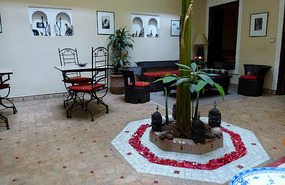
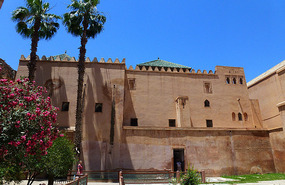
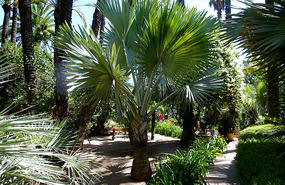
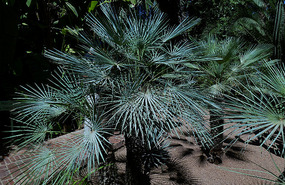
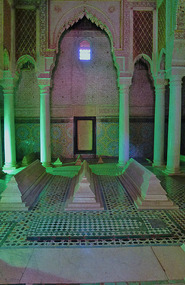
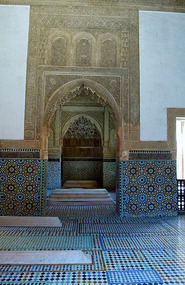
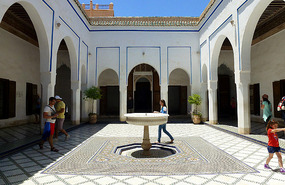
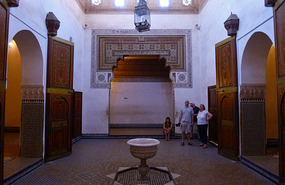
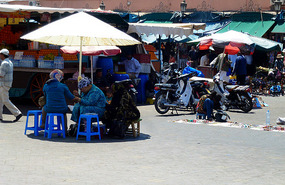
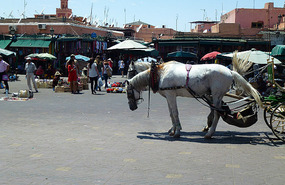
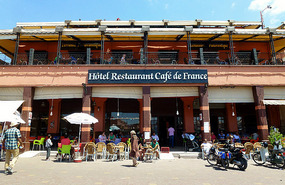
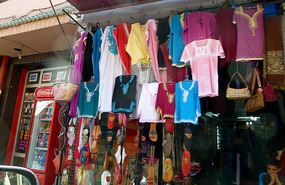





2025-05-22